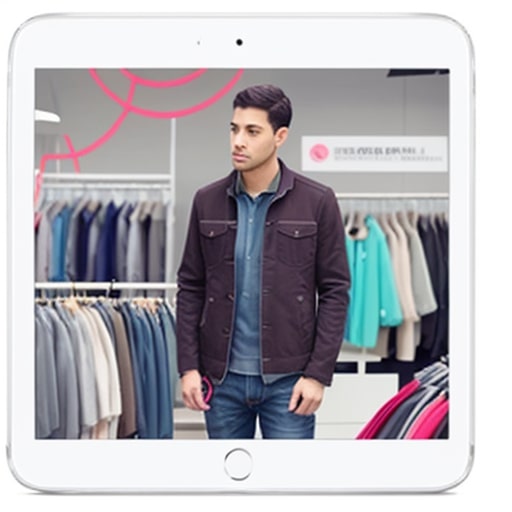The Top 6 AI Video Annotation Tools of 2024
Aug 7, 2024
Welcome back to another blog post of AI discoveries that we’ve been playing with over the first half of 2024!
Today, we’re chatting about video annotation tools. You know, those nifty programs that help AI understand what’s happening in videos? Yeah, those are more important than ever in 2024, a trend we will see around for a while.
So, get comfy, and let’s dive into the Top 6 AI Video Annotation Tools that are making waves in and out of our office this year. Trust me, whether you’re a AI junkie or just someone who likes to stay in the know, you’re in for a treat.
V7: The Jack-of-All-Trades
All right, let’s start off by talking about V7 – the tool that’s got us buzzing like a bee on espresso. If the annotation world had a talent show, V7 would be that annoyingly gifted kid who pretty much aces every category.
Picture this: You’re drowning in a sea of video footage, trying to tag cars like a caffeinated traffic cop. Its automation capabilities are so slick you’ll wonder if it’s been secretly binge-watching all those sci-fi movies about AI taking over the world (don’t worry, it’s on our side… for now…..for…..now).
But wait, there’s more! (No, I’m not trying to sell you kitchen knives.) V7 isn’t just a one-trick pony. It juggles videos and images like a circus performer on steroids. Whether you’re hunting for objects or playing pixel detective with image segmentation, V7’s got your back.
Now, let’s talk about data management. If your dataset were a messy room, V7 would be that friend who colour-codes your closet and alphabetizes your spice rack – all while you’re taking a nap. It’s like having a librarian with OCD but in a good way.
Just when you think it can’t get any better, V7 pulls out its party trick: autoML. For the AI newbies out there, imagine teaching a computer to teach itself. It’s like Inception but with less Leonardo DiCaprio and more algorithms.
In AI training, V7 is like that cool teacher who makes learning fun. You know, the one who turns boring lectures into interactive games? Yeah, that’s V7 with its autoML, turning the headache of model training into something that’s actually… dare I say it… enjoyable?
Bottom line? V7 is like having a Swiss Army knife, a personal assistant, and an AI guru all rolled into one. It’s the kind of tool that makes you want to tackle more significant projects to see what it can do.
V7 is ready to join your team – no coffee runs are required!
Dataloop: The Productivity Wizard
Next on our list is Dataloop. If you’ve ever felt like you’re drowning in data, Dataloop is your lifeguard. It’s all about making the annotation process smoother than a freshly waxed surfboard.
Dataloop gives you all the tools you need – bounding boxes, polygons, segmentation, you name it. But here’s the kicker: it’s designed to boost your productivity. It’s like having a caffeine drip for your annotation process, minus the jitters.
Ruttl: The Pixel-Perfect Perfectionist
Now, let’s talk about Ruttl. If you’re the kind of person who notices when a picture frame is tilted by half a degree, Ruttl is your new best friend. This tool is all about precision, letting you annotate videos frame by frame.
What truly sets Ruttl apart, though, is its collaborative features. It’s like having a virtual whiteboard where you and your team can brainstorm, comment, and annotate together. Plus, with features like pixel-pinned comments and free-hand annotations, it’s a dream come true for creators and professionals who need that extra level of detail.
CVAT: The Open-Source Wonder
CVAT is the Computer Vision Annotation Tool that’s like the cool, rebellious cousin in the annotation tool family and my personal favourite.
First things first, CVAT is open-source. What does that mean? Imagine a potluck where everyone brings their secret recipe to the table. That’s CVAT – a buffet of brilliant ideas from developers worldwide. It’s constantly evolving, like a digital organism feeding on the collective brainpower of the tech community. Pretty rad, right?
Now, let’s chat about flexibility. CVAT is like that friend who’s up for anything – karaoke on a Tuesday? Sure. Impromptu road trip? Pack the bags! In the annotation world, this translates to a smorgasbord of options:
Bounding Boxes: Want to draw rectangles around objects? CVAT’s got you covered faster than you can say “geometric shapes.”
Polygons: Need to trace the intricate outline of a cloud? CVAT lets you go full-on connect-the-dots pro.
Keypoints: Want to map out the skeleton of a dancing flamingo? CVAT’s keypoint tools are ready for your wildest annotation dreams.
But wait, there’s more! (I promise this isn’t an infomercial.) CVAT isn’t just flexible in its annotation styles; it’s also a social butterfly when it comes to AI frameworks. Whether you’re team TensorFlow, a PyTorch enthusiast, or dabbling in something more exotic, CVAT plays well with others. It’s like the UN of annotation tools, fostering international cooperation in the AI world.
Here’s where it gets fascinating: CVAT isn’t just a tool; it’s a playground for innovation. Because it’s open-source, you can tweak, extend, and mould it to fit your specific needs. Do you have a wild idea for a new annotation feature? With CVAT, you’re not just a user; you’re a potential contributor. It’s like being handed the keys to a high-tech workshop and told, “Go nuts!”
But don’t let all this tech talk scare you off if you’re new to the game. CVAT also prides itself on being user-friendly. It’s got a web-based interface that’s slicker than a greased pig, making it accessible whether you’re annotating from your office desktop or your laptop at the local coffee shop (try not to spill your latte on the keyboard).
And let’s talk about integration. CVAT doesn’t live in a bubble. It plays nicely with popular dataset formats and can export your hard work in various styles. It’s like having a universal translator for your annotations.
CVAT is robust enough for the pros, accessible for the newbies, and flexible enough to make both groups dance happily. Whether you’re annotating images for a world-changing AI project or just trying to teach a computer to recognize different types of pasta (hey, no judgment here), CVAT is ready to be your trusty sidekick.
Hasty.ai: The Speed Demon
Hasty.ai is like that overachiever in school who somehow manages to do everything faster than everyone else. It’s not just about annotation; it’s about annotation at the speed of light.
This tool combines annotation, model training, and active learning all in one platform. It’s got these cool automated labelling features that can seriously cut down your annotation time. If you’re working on a project where your model needs to keep learning and improving,
Hasty.ai is your go-to.
Amazon SageMaker Ground Truth: The Enterprise Powerhouse
Last but definitely not least, we’ve got Amazon SageMaker Ground Truth. This is like the corporate executive of video annotation tools – it’s part of Amazon’s machine learning family, and it means business.
SageMaker Ground Truth is perfect for big, ambitious projects. It has all the annotation tools you need and offers both automated labelling and human workforce options. It’s like having a whole army of annotators at your fingertips.
Whether annotating a few home videos or tackling a massive dataset for the next big AI breakthrough, there’s a tool here for you. If your organization is looking for a reliable service partner to help with some of your AI annotation needs, be sure to check out some of our industry leading services ranging from our Video Annotation Services all the way to our cutting edge Bounding Boxes and 3D Cuboids Annotation Services. We’re sure you won’t regret you did.
Remember, the right tool can make all the difference in your AI journey. It’s like having the right pair of shoes for a marathon – sure, you could run barefoot, but why would you when you’ve got these amazing options? And if you still find yourself with a few questions feel free to drop us a message as were always up for a chat on all things AI.
Now, I’m curious – have you used any of these tools? Or maybe you’ve got a favourite that didn’t make our list? Please drop a comment below, and let’s chat about it. After all, the world of AI is constantly evolving, and who knows? Your input could shape the next big thing in video annotation.
Until next time, keep exploring, keep learning, and remember—in the world of AI, today’s video annotation could be tomorrow’s industry-specific game-changing breakthrough!
Recent articles
Generative AI summit 2024
Generative AI summit 2024
Client Case Study: Automated Accounting for Intelligent Processing
Client Case Study: Automated Accounting for Intelligent Processing
Client Case Study: AI Logistics Control
Client Case Study: AI Logistics Control
Client Case Study: Inquiry Filter for a CRM Platform
Client Case Study: Inquiry Filter for a CRM Platform
Client Case Study: Product Classification
Client Case Study: Product Classification
Client Case Study: Interius Farms Revolutionizing Vertical Farming with AI and Robotics
Client Case Study: Interius Farms Revolutionizing Vertical Farming with AI and Robotics
Client Case Study: Virtual Apparels Try-On
Client Case Study: Virtual Apparels Try-On
Client Case Study: SURGAR Delivering Augmented Reality for Laparoscopic Surgery
Client Case Study: SURGAR Delivering Augmented Reality for Laparoscopic Surgery
Client Case Study: Drone Intelligent Management
Client Case Study: Drone Intelligent Management
Client Case Study: Query-item matching for database management
Client Case Study: Query-item matching for database management











